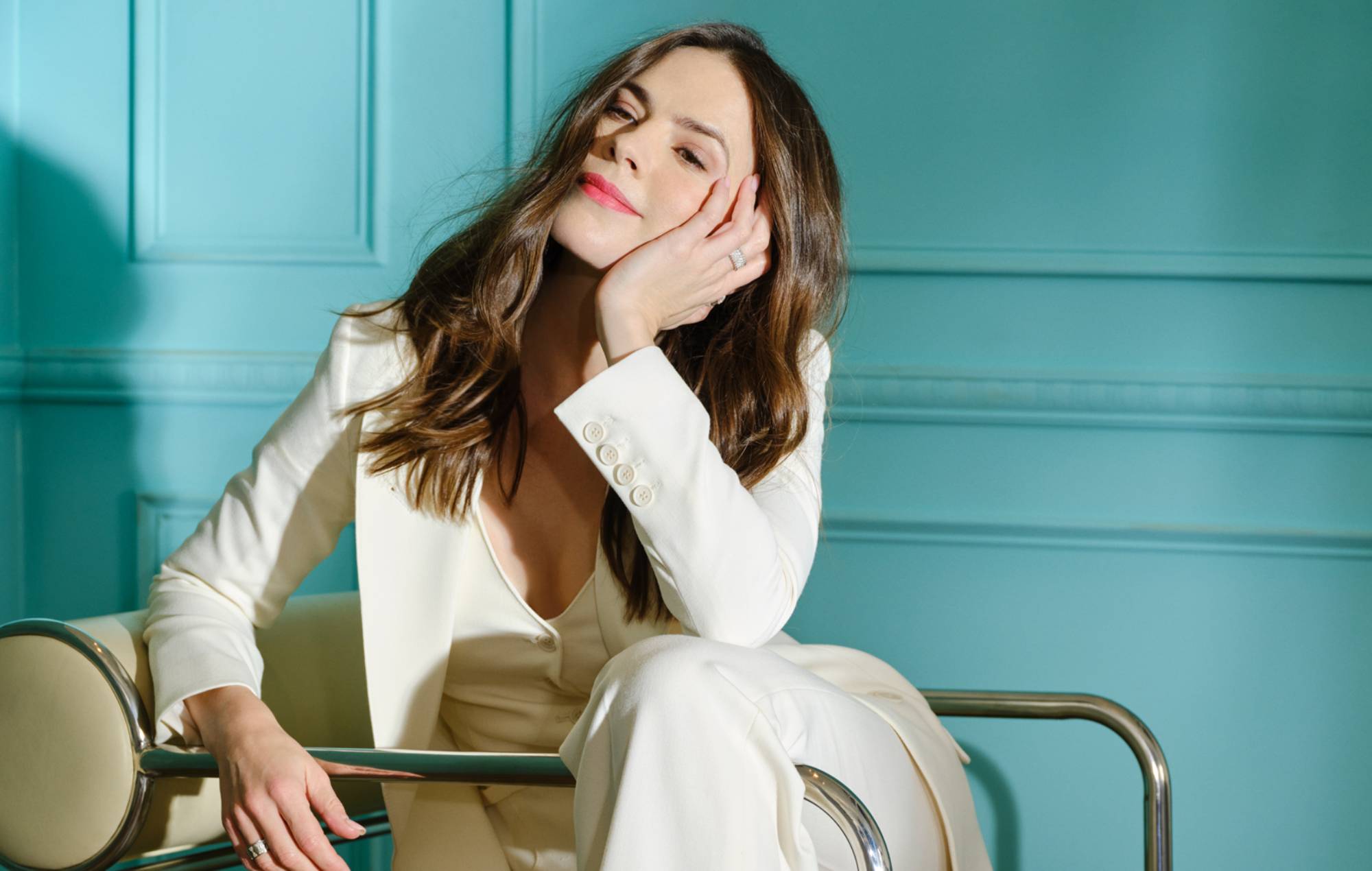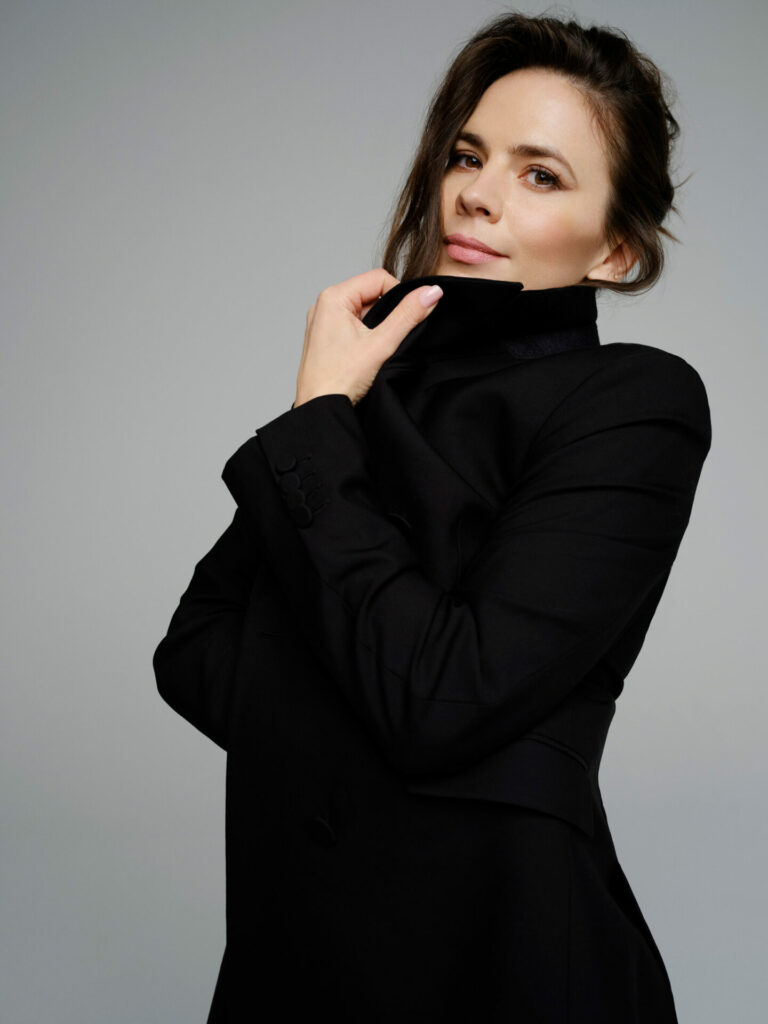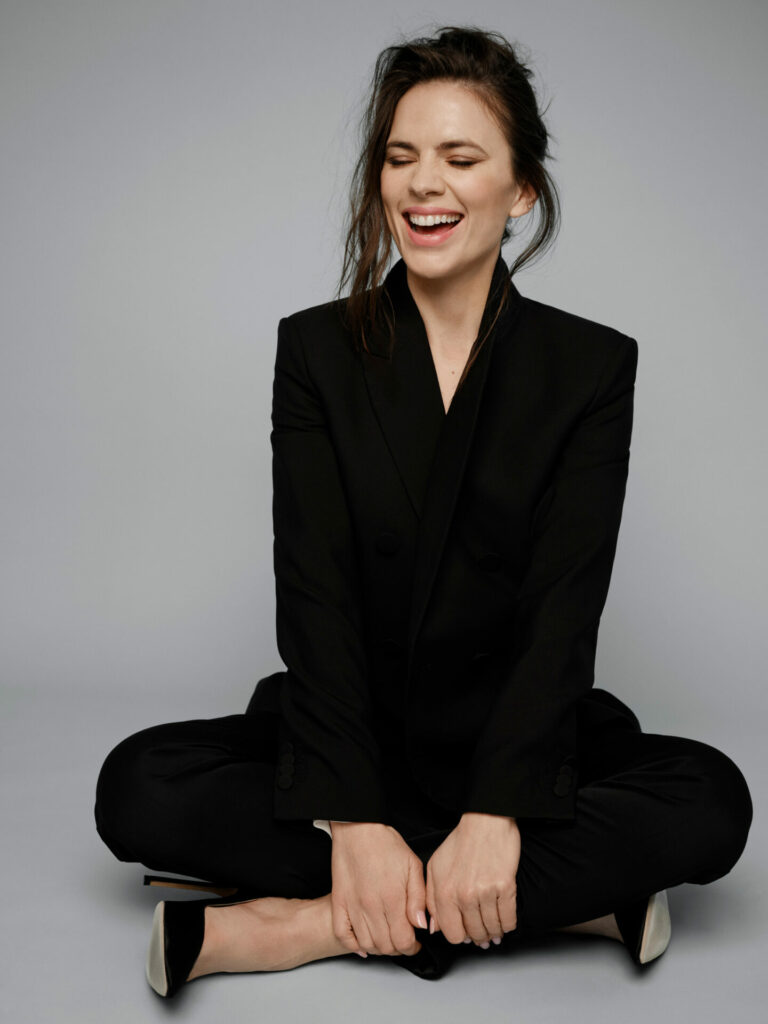Hayley Atwell: Anything is (Im)possible
As she joins the Mission: Impossible juggernaut for its seventh instalment, Dead Reckoning Part One, leading lady Hayley Atwell reveals what it’s like to learn the art of filmcraft from Tom Cruise and how she is redefining what success means to her

Whether she is slow-dancing with Captain America to wartime big band music in Avengers: Endgame, taking to the London stage in adaptations of Henrik Ibsen and Shakespeare, or hanging off a Venetian bridge by her ankles in a high-octane action sequence for Mission: Impossible’s latest two-parter Dead Reckoning, Hayley Atwell has proven herself a force on screen, transcending ‘leading lady’ stereotypes and proving herself a more-than-worthy foil to the men acting opposite her.
When we chat, Atwell is fresh from a long workout — she’s grown used to training every part of her body not simply for aesthetics but for the strength and injury avoidance that four years of practical stunt-work opposite Tom Cruise might require. She pushes her curtain of dark hair off her neck and says breezily that she’s “in a T-shirt like a sweaty teenager”, but she looks, as you might expect, as lovely as ever. She’s a garrulous and cheerful conversationalist, offering up an anecdote on the surreality of making a movie like Mission: Impossible.
“At one point, they said to us, ‘We really want you to have a sequence where you and Tom run with each other, and you’re going to be handcuffed to him. And you’ll be in heels. On the streets of Rome.’ I was like: ‘I’m running next to Mr Movie Running Man. The iconic Tom Cruise run,’” she says. Even she, at times, seems to find it difficult to get her head around it all.
Playing an enigmatic new character named Grace opposite Tom Cruise’s Ethan Hunt, with shifting motives that make her both a source of fascination and of danger, Atwell describes Grace as “an absolute lone wolf. The idea that anyone would come to her and work with her, she’s thinking: ‘What’s the agenda?’ So every move that she makes, she upends Ethan. Which has a beautiful comedic chemistry to it,” says Atwell.
The story of Atwell’s involvement began a decade ago, when Christopher McQuarrie, the American writer-director responsible for Jack Reacher and the successful fifth instalment of the Mission: Impossible franchise, Rogue Nation, had, according to Atwell, been “to see a play that I was in, in the West End in London. And he took me out for dinner afterwards and said, ‘What you can do on that stage — I want to bottle it, and I want to put it in a movie.’”
From first meeting McQuarrie, Atwell says, “I came away just thinking that he’s incredibly erudite. His understanding of structure and character development was like talking to a theatre nerd; he understood craft. I had met him and Tom at other screen tests, with other things that didn’t come my way. So, when I got a call, saying, ‘You know, they’re looking for a new leading lady for the next two Mission: Impossible films…’ it was amazing.”

After a raft of screen tests and choreography tests wherein stunt coordinators would try to learn where Atwell’s natural abilities and centre of gravity were, the process was about folding her talents into a role, in a way of reverse-engineering the part. As Atwell explains, “The team wanted someone that comes in and embraces the work ethic of always searching, of going and trying out 10 different things and seeing what feels most alive. It takes courage to know that the trajectory and the journey of the character will change throughout the process.”
This is a somewhat different tack from what most actors, including Atwell, might be accustomed to. But a quick glance at her acting resumé shows that there was never a ‘type’. Although she has a classic, raven-haired beauty which has predisposed her to being cast in period films and television series, from a turn in Howard’s End to her lasting impact as the strong-willed Agent Peggy Carter in Agent Carter, she has regularly undercut any ‘English Rose’ delineation with a tough frankness and desire to get her hands dirty. “My friend Deborah Francis-White, who runs the podcast The Guilty Feminist, says there’s a test called the ‘Fun Killer Test’. It’s when in a movie with a strong male protagonist, the woman is seen as the moral compass, the emotionally mature one who doesn’t want the man to, say, go off to war. If the protagonist does what she wants, you don’t have a film,” she points out.
And even with the no-fun-killer rule and all the action/adventure-based material Atwell has under her belt, Mission: Impossible is a markedly different kind of big-budget summer blockbuster. “There’s so much that happens in post-production with CGI on Marvel. But with the mythology and legacy of Mission, and of Tom’s reputation, it’s all about making it practical and mechanical and real. There’s no CGI in sight. There are no wires there. It’s not the superhero world; the audience have to feel that these human beings can break bones, as indeed Tom did,” Atwell explains.
The importance of learning every element of the art of filmmaking was key to the experience, too, making for an unusually porous film set where every aspect of the field was studied. “I was invited into every production meeting. Tom was like: ‘The whole process will be demystified for you.’ We did camera tests where he would show me that if the camera, for example, was slightly above me, it created this sense of pressure, and the sense of making her more vulnerable,” Atwell says. “Then if you put the camera slightly below me, I am a bigger presence in the frame, and it puts me in a position of power without having to do anything, no acting required. It’s just about composition of the frame — so it was like an ongoing workshop and a masterclass to study film technique.”
As an extension of that, the two actors and the director also watched a number of films together — some of which were surprising choices: 70s classics of the heist and the caper genres were among the most common Atwell lists, including The Thomas Crown Affair, The Sting, and The Taking of Pelham 123. But she also mentions more romantic, battle-of-the-sexes films like What’s Up, Doc? and Ordinary People, suggesting, perhaps, something of the spirit of her feisty onscreen dynamic with Ethan Hunt.

It makes Atwell well paired with the likes of the notoriously thorough Cruise that she is unafraid to talk about influences and craft, a subject actors often shy from for fear of pretension. It’s reflective of the fact that the variety in her work is rich, and that she can apply her training to a staggering number of projects. “I don’t believe in, sort of, highbrow and lowbrow, or that an action franchise has any more or less value than a classical play. They’re all different art forms. But they’re all contributing to the culture,” she says.
“When it comes to stunt choreography — a lot of my drama school training was very much about training the body, understanding a sense of neutrality, which is through things like the Alexander Technique. If you are in alignment with a posture where your core is holding you up, you can then later adopt certain different centres of gravity within your body that capture characteristic choices,” she explains.
“So when it came to the actual stunt, it was Wade Eastwood and his brilliant stunt team — they would show me a choreographed fight scene. And then I would give it a go. And then they break it down movement by movement,” she says. “I jumped backwards off a moving train and almost fell onto the tracks. I’m doing the splits there at one point. But I’m not sure it makes it into the movie,” she adds, casually.
Still, her Mission: Impossible dream role wasn’t only about the physical challenges — it also meant Atwell would have to face the fearsomely hot glow of tabloid attention around one of the World’s Biggest Movie Stars™. “I remember once asking [Tom], ‘If this movie comes out, it might mean I’ll get an inflow of energy from the outside world digging around in things that are not of their concern, because they’re wanting to get a story or, you know, giving me backhanded compliments about how I look,” she recalls.
“I would go to him with certain questions or ask, hypothetically speaking, ‘What would I do?’ And he said: ‘Hayley, you know who you are. And I know who I am. If people are going to say whatever they’re going to say, we’re not in control of that. But if you have integrity, and the people around you who love you want things for you and not from you, then everything else you can let go.’”
Atwell seems extraordinarily at peace with the noise, and unprompted, remarks, “It’s so contradictory to tabloid stories. I can see with Tom that his soul is intact. He’s really kind. I’ve been working with the guy for four years, and you can’t sustain that if it’s not real. But he loves it. He loves being a movie star, and he wears it like a loose garment.”
Atwell, too, seems blessed with a self-assurance and poise that perhaps comes from this same inner well of strength. “I think I’ve been around long enough now, so I kind of have the privilege of getting older and have been in the industry 17 years. I know how to look after myself through these things,” she says. After all the stressors and delays of shooting an enormous production during a global pandemic — and the long and winding road it has taken to finally reach audiences —you’d think she might want to rest. But Atwell doesn’t seem to be taking a long pause. She’s back in production this summer after a whirlwind international press tour for Dead Reckoning: Part One. “I’ve decided that despite the scheduling, I want to give myself a pat on the back for the work no one else will see, which is about my evolving understanding of success. Did I achieve what I set out to do? Did I give it my all? Because anything that comes after that is not my business. And that’s quite a liberating stance to take.”
